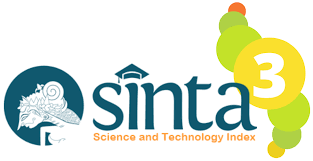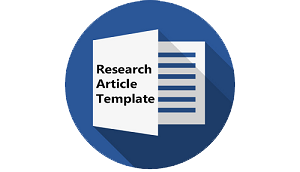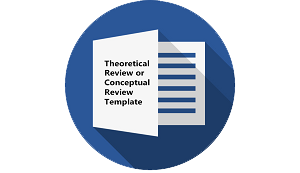KEMAMPUAN MENGGUNAKAN MAJAS PERBANDINGAN DALAM PRODUKSI TEKS EKSEMPLUM SISWA SMP KELAS IX LOMBOK UTARA
DOI:
https://doi.org/10.30957/lingua.v15i2.481Keywords:
exemplum, comparison, figurative language.Abstract
This study investigates how the nineth graders of SMP in Lombok Utara apply exemplum teks in writing expressions. Two SMPN in Gangga and Bayan in Lombok Utara city were assigned as the research setting. An amount of 30 students and one teacer in each school was selected as participants. Of three states SMP in Lombok Utara, both schools have applied The 2013 Curriculum, so that both schools were seected as the research setting. Data were collected through written test the students made in exemplum, interviews with teachers to know strategies to express the exemplum. The study reveals that the nineth graders of SMP in Lombok Utara perform succesfully to use figurative language for comparison. The mastery is colored as: of 58 students, 48 (79%) are succesful to use figurative language for comparison, 28% use incomplete text structure of exemplum emphasizing on orietnation and incidents. The students have produced conjunctions, that include: conjunction intersentences, conjunction intra-sentences, and appropriate adverbs. However, conjunctions to link paragraphs after another are short. Exemplum that refers to example, story, or annecdote is not well developed by students. Â
Â
Downloads
References
Arikunto, Suharsini, 2006. Prosedur Penelitian Suatu Pendekatan Prgmatik. Jakarta: Bina Aksara.
Alwi, Hasan. dkk.2010. Tata Bahasa Baku Bahasa Indonesia Edisi Ketiga. Balai Pustaka.
Chaer, Abdul. 2011. Tata Bahasa Praktis Bahasa Indonesia. Jakarta: Rineka Cipta
Chaer, Abdul. 2015. Sintaksis Bahasa Indonesia Pendekatan Proses. Jakarta: Rineka Cipta.
Depdikbud RI. 1988. Tata Bahasa Baku Bahasa Indonesia.
Guntur Tarigan, Henry. 2013. Pengajaran Gaya Bahasa. Bandung: Penerbit Angkasa.
Gustina Sucipto, Maya. 2015. Bahasa Indonesia SMP/Mts Kelas IX. Klaten: Intan Pariwara.
Keraf, Gorys. 1999. Diksi dan Gaya Bahasa . Jakarta: Pt. Gramedia Pusaka Utama.
Kementerian Pendidikan dan Kebudayaan RI. 2013. Bahasa Indonesia Ekspresi Diri dan Akademik kelas X. Jakarta: Kementrian Pendidikan dan Kebudayaan.
Kementerian P&K RI. 2015. Bahasa Indonesia Wahana Pengetahuan SMP/Mts Kelas IX. Jakarta: Kementrian P & K RI.
Mahsun. 2014. Teks dalam Pembelajaran Bahasa Indonesia Kurikulum 2013. Jakarta: Pt. Raja Grafindo Persada Jakarta.
Kementerian Pendidikan dan Kebudayaan. 2014. Materi Pelatihan Implemtasi Kurikulum K13 Mata Pelajaran Bahasa Indonesia SMP. Jakarta: Kementerian P&K RI.
Mahsun. 2017. Metode Penelitian Bahasa. Depok: Pt. Rajagrafindo Persada.
Padi, Editorial. 2013. Kumpulan Super Lengkap Sastra Indonesia. Jakarta: Ilmu Padi Infra Pustaka Makmur.
Sobur, Alex. 2012. Analisis Teks Media Suatu Pengantar untuk Analisis Wacana, Analisis Semiotik, dan Analisis Framing. Bandung: PT Remaja Rosdakarya.
Salinan Lampiran Peraturan Menteri Pendidikan dan Kebudayaan Republik Indonesia Nomor 65 Tahun 2013 tentang Standar Proses Pendidikan Dasar dan Menengah 2013.
Sugiono. 2014. Metode Penelitian Pendidikan Pendekatan Kuantitatif, Kualitatif dan R&D. Bandung: Alfabeta.
Tri Priyatni, Endah. 2014. Desain Pembelajaran Bahasa Indonesia dalam Kurikulum 2013. Jakarta: PT Bumi Aksara.
Wahyuni. dkk.2012. Asesmen Pembelajaran Bahasa. Bandung: Pt. Refika Aditama.
Downloads
Published
How to Cite
Issue
Section
License
Authors who publish with this journal agree to the following terms:
- Authors retain copyright and grant the journal right of first publication with the work simultaneously licensed under a Creative Commons Attribution-ShareAlike 4.0 International License that allows others to share the work with an acknowledgement of the work's authorship and initial publication in this journal.
- Authors are able to enter into separate, additional contractual arrangements for the non-exclusive distribution of the journal's published version of the work (e.g., post it to an institutional repository or publish it in a book), with an acknowledgement of its initial publication in this journal.
- Authors are permitted and encouraged to post their work online (e.g., in institutional repositories or on their website) prior to and during the submission process, as it can lead to productive exchanges, as well as earlier and greater citation of published work (See The Effect of Open Access).















